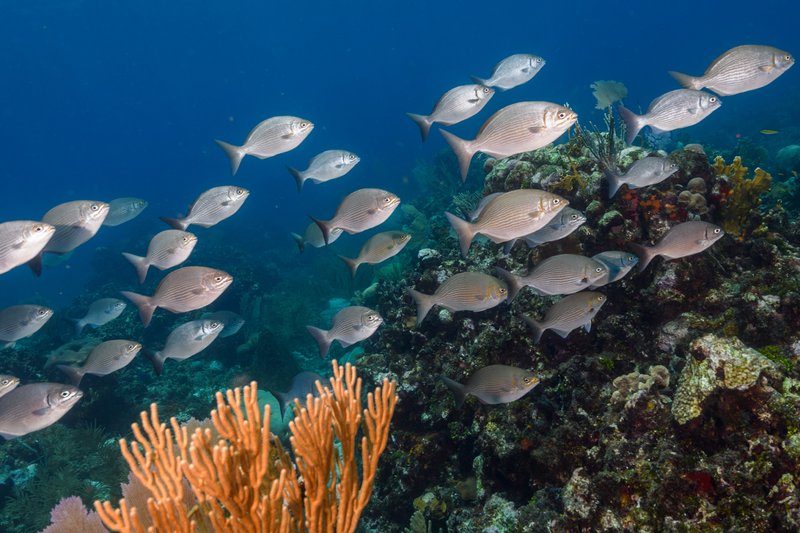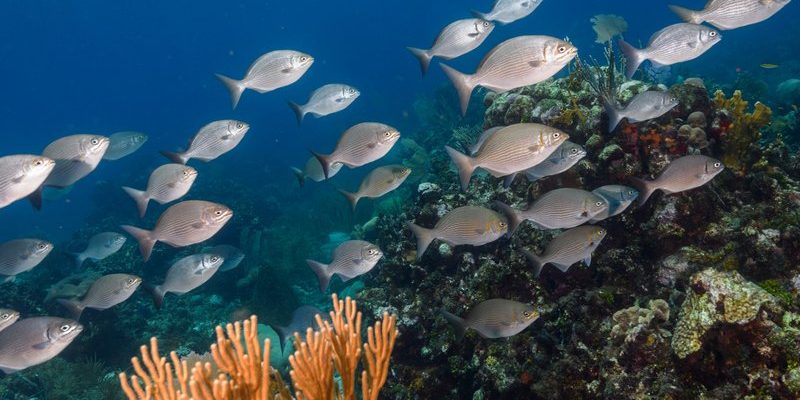
When you think of fish, do you picture vibrant colors or sleek shapes swimming through clear waters? One fish that might not spring to your mind is the dab. This flatfish is quite the character, blending into sandy seabeds and showcasing some fascinating traits that make it unique in the aquatic world. If you’ve ever seen a dab, you might have noticed how its body almost resembles a pancake lying flat on the ocean floor.
The dab is more than just a flat fish; it’s a crucial part of many coastal ecosystems. These fish are not only interesting to observe but are also significant in commercial fishing. You might be surprised to learn that dabs are quite popular in some culinary circles, often featured in dishes around Europe, particularly in the UK. Get ready to dive in as we explore everything there is to know about this captivating fish!
What is a Dab?
The dab (scientific name: Limanda limanda) is a species of flatfish belonging to the family Pleuronectidae. Found primarily in the North Atlantic, these fish have a distinctive oval shape, which helps them blend seamlessly with the sandy or muddy bottoms of their habitats. Their coloration is usually a mottled brown or gray, allowing them to camouflage easily against the ocean floor, making it hard for predators and unsuspecting prey to spot them.
Dabs can grow to an average length of about 30 to 50 centimeters (around 12 to 20 inches). They are equipped with both eyes on their upper side, a characteristic feature of many flatfish that allows them to see their surroundings while lying flat against the seabed. Interestingly, when they are born, dabs start off swimming upright like most fish. However, as they mature, one eye migrates to the other side of their body, giving them that iconic flat appearance.
In terms of their diet, dabs are opportunistic feeders. They primarily consume smaller fish, crustaceans, and worms. This adaptability in their feeding habits plays a key role in their success within various marine environments, allowing them to thrive in areas with adequate food supply.
Habitat of Dab Fish
Dabs are typically found in shallow waters, especially along the continental shelf. They tend to prefer sandy or muddy substrates where they can easily bury themselves to hide from both predators and fishermen. This ability to camouflage allows them to ambush prey and evade danger effectively. You may find them in depths of around 20 to 70 meters, although they can also inhabit deeper waters at times.
During the summer, dabs often migrate inshore, moving towards shallower waters for breeding. This behavior not only supports their reproduction but also enables them to take advantage of a greater abundance of food sources available in these areas. Such migrations can lead to the establishment of seasonal fisheries targeting these fish as they move closer to shore.
In terms of geographical distribution, you can find the dab along the coasts of Europe, particularly from Norway down to the Mediterranean. They have also made their way into parts of the North American Atlantic coast. This broad distribution makes dabs a versatile species that adjusts well to various marine environments.
Dab Fish Characteristics
One of the standout characteristics of the dab is its unique body shape. Unlike most fish, dabs have a flattened profile that allows them to lie almost completely flat against the ocean floor. This feature not only aids in their camouflage but also supports their hunting strategy as they ambush prey from below. With both eyes situated on the upper side of their body, they are well-equipped to keep an eye out for potential threats while remaining hidden.
Additionally, dabs possess a relatively small mouth compared to their body size. This might seem like a disadvantage, but it’s perfectly suited for their feeding habits. They can easily suck in small fish and invertebrates that come too close while remaining mostly undetected. Did you know that their skin is covered in tiny scales? These scales help protect them and contribute to their overall color and camouflage.
Another interesting aspect of dabs is their reproductive behavior. Females can lay up to 1 million eggs during a spawning season, typically between late winter and early summer. The larvae are tiny and free-floating when they hatch, drifting with the current until they develop into juvenile fish and settle onto the seabed.
Dab Fish Diet
Dabs are not picky eaters, which is part of why they thrive in various environments. Their diet mainly consists of small fish, mollusks, and crustaceans. As opportunistic feeders, dabs will take advantage of whatever food source is available in their habitat. This flexibility makes them highly adaptable to changes in their surroundings.
You might be curious about how dabs capture their prey. They typically lie in wait, partially buried in the sand, using their coloration to blend in. When unsuspecting prey swims by, they quickly lunge to snatch it up. It’s a classic example of the predator-prey relationship found in nature.
Interestingly, dabs play a role in controlling the populations of smaller fish and invertebrates in their ecosystem. By feeding on them, dabs help maintain a balance within the food web. This also highlights the importance of dabs in marine ecosystems, where their presence contributes to the overall health of the environment.
Dab Fish in Fishing and Cuisine
Dabs are not just fascinating creatures to observe; they are also an important part of commercial fishing. Their flat, delicate flesh is considered a delicacy in many parts of Europe, particularly in the UK and France. Many seafood lovers enjoy dabs for their mild flavor and firm texture, making them perfect for various cooking methods, including frying, grilling, and baking.
In the fishing industry, dabs are often caught using trawl nets or by hook-and-line methods. Due to their popularity in cuisine, dabs are targeted in many fisheries, with regulations in place to ensure sustainable fishing practices. The fishing season for dabs typically runs from autumn through spring, with peak catches occurring during colder months when they come closer to shore.
As you explore dishes featuring dabs, you’ll find them prepared in various ways, from simple pan-fried fillets to elaborate presentations in seafood restaurants. Pairing dabs with lemon, herbs, or a light sauce enhances their mild flavor and makes for a delightful dining experience.
Conservation of Dab Fish
Like many marine species, dabs face challenges from overfishing and habitat degradation. Understanding the importance of sustainable fishing practices is crucial to maintaining their populations and overall ecosystem health. Regulations are in place in many regions to protect dab stocks, including limits on catch sizes and seasonal fishing closures.
Moreover, conservation efforts aim to monitor dab populations and ensure that fishing practices do not disrupt their breeding grounds. By promoting responsible fishing and habitat preservation, we can support the future of dabs and other marine species.
As an individual, you can contribute to these efforts by supporting sustainable seafood choices and being mindful of the impact of fishing practices on marine life. Every small action counts!
Interesting Facts About Dab Fish
| Scientific Name: | Limanda limanda |
| Average Length: | 30–50 cm (12–20 inches) |
| Diet: | Small fish, mollusks, crustaceans |
| Habitat: | North Atlantic, shallow sandy or muddy waters |
| Reproduction: | Up to 1 million eggs during spawning season |
FAQ
What does dab fish taste like?
The taste of dab fish is often described as mild and slightly sweet, making it a favorite among seafood lovers. Its flesh is firm yet delicate, allowing it to hold up well to various cooking methods. You might find it particularly enjoyable when pan-fried or grilled, as these methods enhance its natural flavors.
Are dabs good for health?
Yes, dab fish can be a healthy choice! It’s a good source of lean protein and contains essential nutrients like omega-3 fatty acids, which are beneficial for heart health. As with any seafood, it’s important to consume it in moderation and be mindful of sourcing to ensure it’s sustainably harvested.
How can I cook dab fish?
You can prepare dab fish in several ways, depending on your taste preferences. A popular method is pan-frying the fillets in a bit of olive oil with a sprinkle of salt and pepper. You can also bake or grill them, often pairing them with fresh herbs, lemon, or a light sauce to enhance the flavor.
Is dab fish the same as flounder?
While they are both flatfish and share some similarities, dabs and flounders are distinct species. Dabs belong to the family Pleuronectidae, while flounders may belong to various families, including both Pleuronectidae and Paralichthyidae. They can differ in size, appearance, and habitat preferences.
Can you find dab fish in aquariums?
While it’s technically possible to keep dab fish in an aquarium, it’s not common due to their specific habitat needs and size. Dabs thrive in large, open spaces with sandy bottoms, which are hard to replicate in a typical home aquarium setting.
What is the lifespan of a dab fish?
Dabs typically have a lifespan of around 10 to 12 years in the wild. However, this can vary depending on their environment and the pressures they face from fishing and predators. Conservation efforts play a vital role in ensuring that dab populations thrive, allowing them to reach their full lifespan potential.
How do dabs reproduce?
Dabs spawn by releasing large quantities of eggs into the water during breeding season, which usually occurs from late winter to early summer. The fertilized eggs float freely in the ocean until they hatch into larvae. Over time, these larvae develop into juvenile dabs that eventually settle on the seabed.
What do juvenile dabs eat?
Juvenile dabs primarily feed on small zooplankton and other tiny organisms found in their environment. As they grow and develop, their diet shifts to include larger prey like small fish and crustaceans, similar to adult dabs.
Are dabs considered a sustainable choice for seafood?
When sourced from well-managed fisheries, dabs can be considered a sustainable seafood choice. Regulations are in place in many regions to protect dab populations and ensure responsible fishing practices. Always look for eco-labels when purchasing seafood to make informed choices about sustainability.
What are some common predators of dab fish?
Dabs face threats from various predators, including larger fish, seabirds, and marine mammals. Their ability to camouflage helps them evade detection, but they still remain vulnerable to natural predators throughout their lives.
Where can I find dab fish in the wild?
You can find dab fish in the North Atlantic, particularly along the coasts of Europe. They are common in shallow waters and can often be spotted lying flat on sandy or muddy bottoms. If you’re lucky, you might even see them while snorkeling or diving in suitable habitats.

